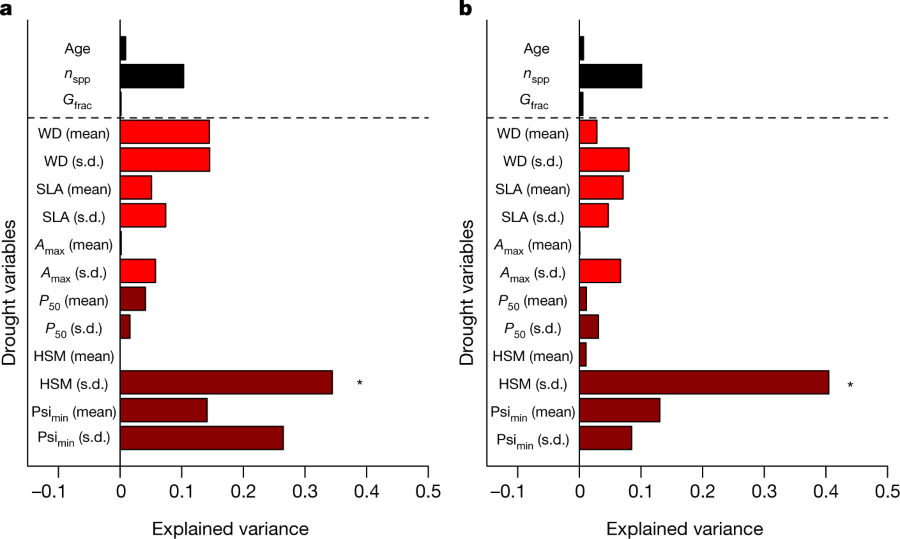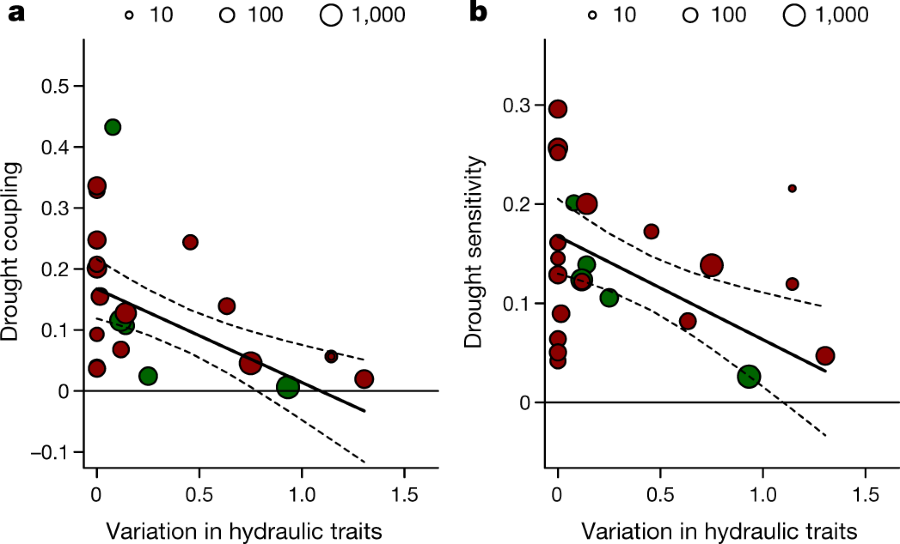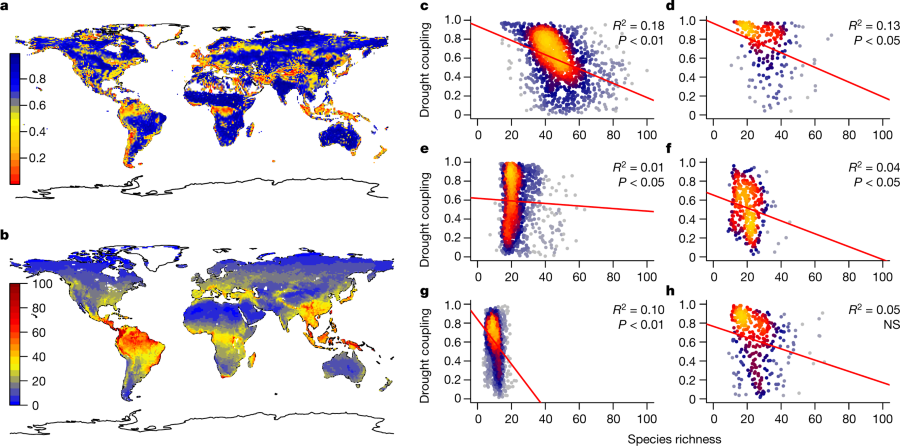Environment & Energy
Showing Original Post only (View all)Species Diversity and the Relationship to the Hydraulic Survivablity of Forests in Drought. [View all]
The scientific paper I will discuss in this post is this one: Hydraulic diversity of forests regulates ecosystem resilience during drought (Anderegg et al. Nature volume 561, pages 538–541 (2018).
Chronic international indifference to climate change - we are all involved, left and right, and in my opinion, all indifferent, all contemptuous of science that we don't intuitively like, based not on the facts of science and on the result of experiment, but on bias - has cause a remarkable rise in temperatures and macroscopic destabilization of the frequency of major weather extremes.
Among those extremes one that bothers me personally quite a bit - I'm an arbophile (if that's a word), a lover of trees - is drought. One of the things I love about the State of New Jersey, where I live, is its forests. As I watch trees die - something going on with increasing frequency - a little piece of me rots with the wood.
I am not a biologist or plant physiologist, but here and there, when time allows, I try to sneak in a few views of papers relating to the physiology of trees.
Some years back, on another site (where I was banned for telling the truth, not that telling the truth is something I would change about myself, even in the era of the revived Big Lie, for mere convenience or popularity) I wrote about one of these readings: Nitrogen, Climate Change, Drought, and Tree Physiology.
The Gods cursed Cassandra, but in all mythology, she is my moral favorite. The insistence among human beings to hear only what they want to hear is ageless.
Things have gotten much worse since I wrote that bit in 2010; when I wrote that piece the concentration of the dangerous fossil fuel waste in the planetary atmosphere was roughly 385 ppm. This month - near the annual minimum - the concentration is roughly 406 ppm.
Whatever it is we think we're doing isn't working and so long as we lie to ourselves by embracing popular nonsense thinking the acceleration of things getting worse will continue.
Anyway, brief excerpts from the Nature paper and some pictures:
Water, carbon and energy exchanges from the land surface strongly influence the atmosphere and climate; these exchanges are dominated by plants in most ecosystems1. Plant physiological responses to water stress influence these fluxes5,6, and the resulting land-surface feedback effects influence local weather as well as the regional atmospheric circulation7. Furthermore, changes in vegetation physiology and cover can drive shifts in sensible and latent heat fluxes that intensify droughts2,3,4,8. Anthropogenic climate change is expected to intensify the hydrological cycle globally, leading to more frequent and more severe droughts in many regions9. Therefore, understanding the drivers of land–atmosphere feedback effects during drought and simulating them in Earth system models is critical for robust future projections and assessment of climate change impacts.
Seminal work has shown that grassland plots with more species exhibit smaller declines in productivity during drought and recover productivity much faster following drought10, indicating that plant biodiversity—particularly functional diversity—may be important for capturing how the land surface interacts with the atmosphere during extreme events. Indeed, it is well-established that—just as a diversified stock portfolio is more likely to survive market turbulence11—diversity can stabilize community function through multiple mechanisms12. First, diverse communities are more likely to contain species with different traits that dictate how they respond to disturbances13. As a result, at least some species are likely to persist through any given disturbance14. Second, diverse communities are more likely to contain competitors that exhibit compensatory dynamics: when drought causes one species to decline in function, its competitor may increase in function and stabilize community function12. Critically, diversity–stability effects are mostly absent in most global land-surface models, most of which represent each biome or plant functional type with a single set of functional traits15, partly owing to a lack of understanding of which functional traits are the most important at ecosystem scales.
In their study of forests, the authors consider a number of factors, the age of the forest, leaf area, and several factors related to the biophysics of water transport, the point at which 50% of the xylem water conductivity is lost, and a factor they call "HSM," the "hydraulic safety margin," by considering the species which make up 80% of the biomass of the forest, and physical traits like wood density.
This graphic gives an idea of their focus:

The caption:
Based on statistical inference, they conclude that the HSM factor is important.
They write:
Another graphic on the topic:

The caption:
They do some work that they define as "preliminary" using satellite data to study the water health of forests, focusing in particular on the United States - a prominent North American country ruled by an ignorant racist with a fondness for sexual assault and his equally mindless enabling cranks - but also encompassing global "estimates."
They produce this graphic:

The caption:
They find, unsurprisingly but nevertheless disturbing in the age of monoculture, that the best resilience in forests facing drought is species diversity. (I'm not sure, however, that adding diversity is a good idea, since the effects of introduced species both intentional and unintentional has greatly impacted the natural biosphere.)
They have a nice and detailed description of their methods in the paper. In conclusion to their discussion they write:
A nice read.
If, by the way, you are interested in supporting and learning science, it does appear that Nature is offering a significant discount on a subscription making it quite affordable. My wife bought me one for my birthday, which saves my fat ass from traveling to scientific libraries a bit.
I love growing old with her, but as I near the end of my life, which I have loved so much, I am pained at what we are leaving behind.
I trust you're having a great autumn weekend.